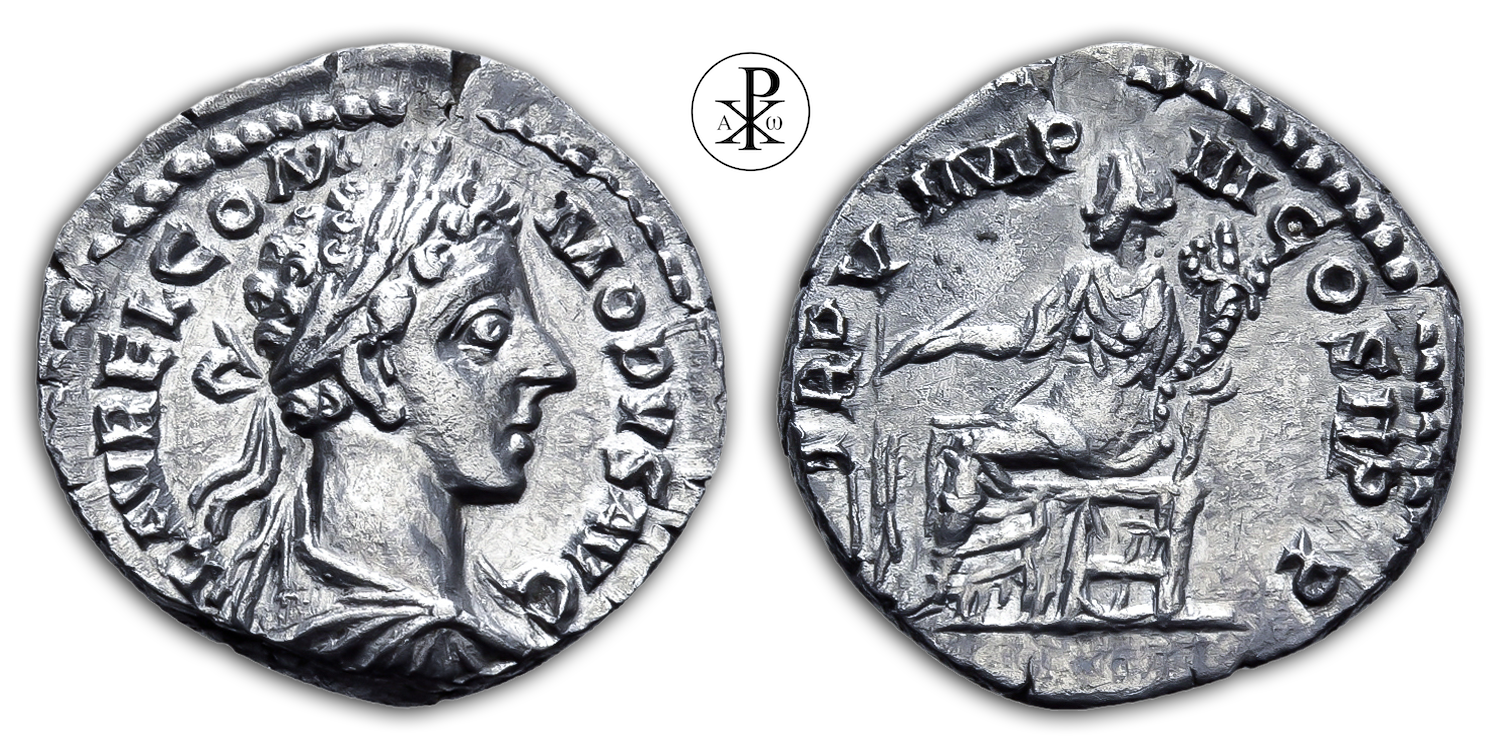Imperator Caesar Lucius Aelius Aurelius Commodus Augustus
Reign: Marcus Aurelius or Commodus
Mint: Rome
Date: 179/180 AD
Nominal: Denarius
Material: Silver
Diameter: 18mm
Weight: 2.89g
Reference: RIC III Commodus 2 var (beardless)
OCRE Online: https://numismatics.org/ocre/id/ric.3.com.2
Rare: R1
Provenance: Nomos Numismatics Zurich, Switzerland (Auction 27, Lot 593)
Pedigree: –
Special: Variation beardless
Obverse: Bust of Commodus, youthful, beardless, laureate and cuirassed, right
Inscription: L AVREL COMMODVS AVG
Translation: Lucius Aurelius Commodus, Augustus
Reverse: Fortuna, draped, seated left on low seat, holding rudder set on ground in right hand and cornucopiae in left hand
Inscription: TR P V IMP III COS II P P
Translation: Tribunicia Potestate Quinta, Imperator Tertium, Consul Secundum, Pater Patriae
Translation: Holder of tribunician power for the fifth time, Imperator for the third time, consul for the second time, father of the nation
Comment: This denarius was issued in several variants, which differ into an earlier and a later type. It is unclear whether the coinage already took place under Commodus or still under Marcus Aurelius. Commodus received the fifth tribunicia potestas on 10 December 179 AD – this would be the earliest possible date of issue and thus still under the reign of Marcus Aurelius. The legend on the obverse, with „L AVREL COMMODVS AVG“, points to a period before the death of Marcus Aurelius, shortly after his death or at the latest before Commodus‘ return to Rome. It is quite possible that this type of denarius was issued shortly after the death of Marcus Aurelius or at the beginning of Commodus‘ reign. The depiction of Fortuna is by no means aimed at a hoped-for return journey (mid, late 180 AD) of the new emperor. With the attributes of the oar and the cornucopia, the symbols of the goddess of fate refer to the promise of luck, generosity, wealth and abundance – through the assumption of power by the (coming) new emperor Commodus. An issue could therefore have taken place between mid-December 179 AD (TR P V) and the end of March 180 AD (after the death of the emperor Marcus Aurelius). Either during the illness or shortly before the death of Marcus Aurelius – or shortly after his death. In both cases as propaganda and promise of a (further) coming happy and successful reign of the successor.
A distinction is made in the variants of this Fortuna denarius between a beardless version of Commodus (as here) and the rarer version (CRI.179.2b) with a slight cheek beard. The latter coinages are the later issues of this type and may have been issued with the depiction of an „adult“ Commodus shortly after the death of Marcus Aurelius in order to present a more mature heir to the throne. The denarius type presented here (CRI.179.2a) was probably issued before or shortly before the death of the seriously ill and dying father.
